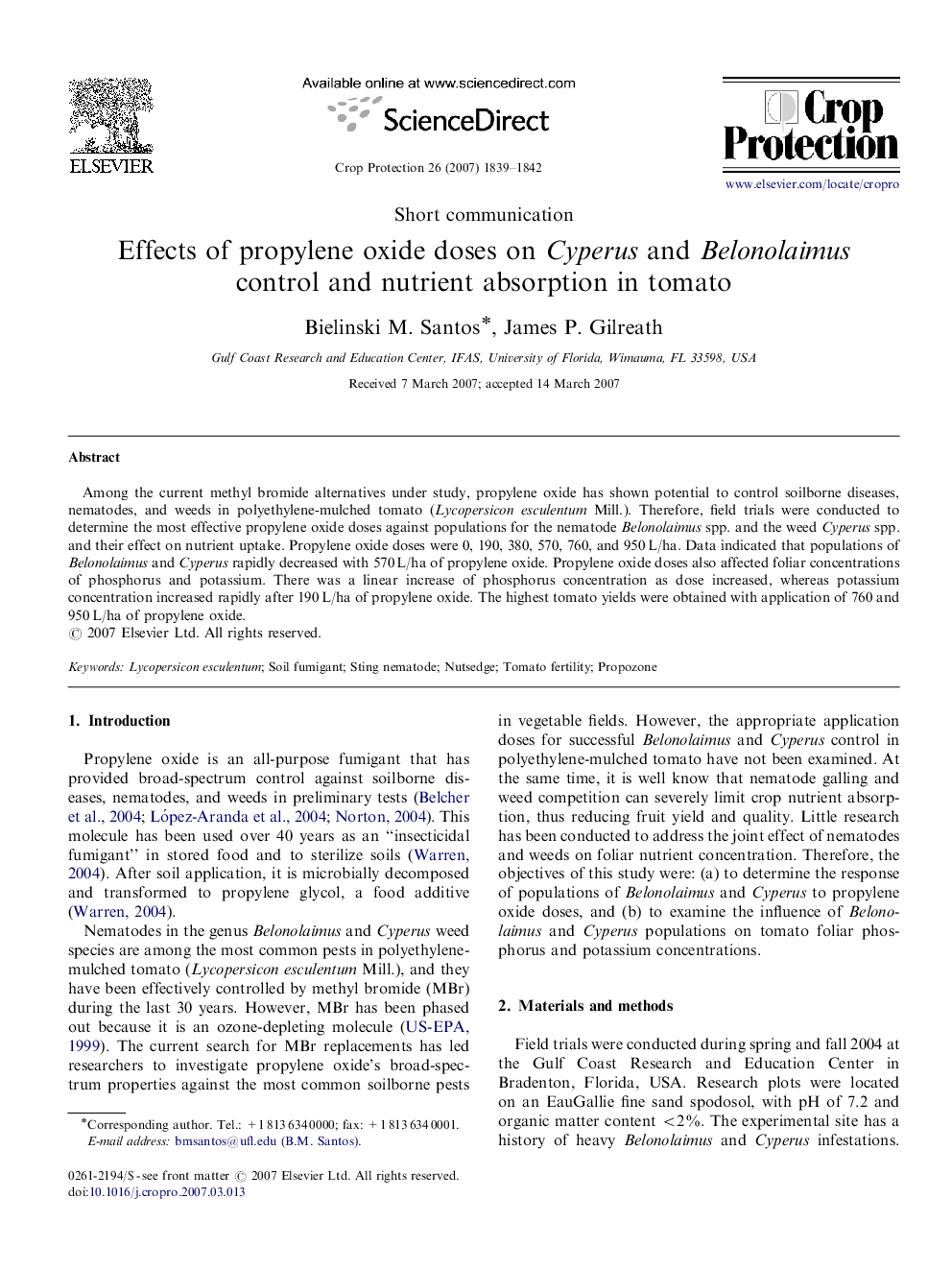| Article ID | Journal | Published Year | Pages | File Type |
|---|---|---|---|---|
| 4507134 | Crop Protection | 2007 | 4 Pages |
Abstract
Among the current methyl bromide alternatives under study, propylene oxide has shown potential to control soilborne diseases, nematodes, and weeds in polyethylene-mulched tomato (Lycopersicon esculentum Mill.). Therefore, field trials were conducted to determine the most effective propylene oxide doses against populations for the nematode Belonolaimus spp. and the weed Cyperus spp. and their effect on nutrient uptake. Propylene oxide doses were 0, 190, 380, 570, 760, and 950Â L/ha. Data indicated that populations of Belonolaimus and Cyperus rapidly decreased with 570Â L/ha of propylene oxide. Propylene oxide doses also affected foliar concentrations of phosphorus and potassium. There was a linear increase of phosphorus concentration as dose increased, whereas potassium concentration increased rapidly after 190Â L/ha of propylene oxide. The highest tomato yields were obtained with application of 760 and 950Â L/ha of propylene oxide.
Related Topics
Life Sciences
Agricultural and Biological Sciences
Agronomy and Crop Science
Authors
Bielinski M. Santos, James P. Gilreath,
